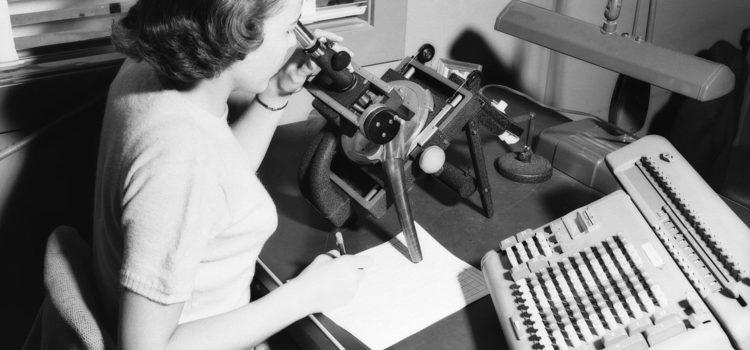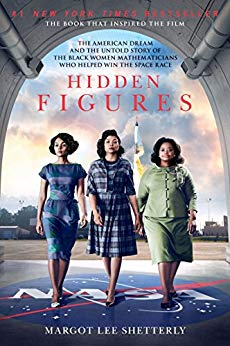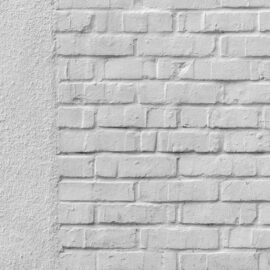

This article is an excerpt from the Shortform summary of "Hidden Figures" by Margot Lee Shetterly. Shortform has the world's best summaries of books you should be reading.
Like this article? Sign up for a free trial here .
Who was Dorothy Hoover, and how did she contribute to changing the culture and rules at NASA? How did Dorothy Hoover help open doors for women, both black and white, to advance at NASA?
Dorothy Hoover was a physicist and mathematician. One of the first black women hired as a human computer at NASA, Dorothy went on to co-publish a paper on wing design for aircraft. Her contribution helped make it possible for women to advance in NASA, once higher-ups saw the work the women were doing, and what they were capable of.
Read more to find out how the women of West Computing advanced through the ranks of NASA.
The West Computers and the Fight for Progress
As women began advancing through the ranks at Langley in the postwar years, they saw that their sex was still a barrier to advancement in a field that was built and run by men. There was a whole universe of networking, consisting of lunches, cocktail hours, and men-only smoking sessions from which the women were excluded. Moreover, the decentralized nature of their work also disadvantaged the female computers. Because they were only given small portions of larger assignments to work on, it was difficult for the women to develop a holistic understanding of the kind of work the male engineers were doing. One of these women was Dorothy Hoover.
For all of the progress that had been made, Langley was still very much a white world, in particular a white man’s world. The women of West Computing may have mastered the intricacies of aerodynamics, but now they faced an even more daunting task: advancing as women in a career that was built and run by men.
The forms of discrimination could be subtle. There was a whole universe of networking, consisting of lunches, cocktail hours, and men-only smoking sessions from which the women of Langley were shut out. Being talented wasn’t enough when they lacked the social capital and access to get their superiors to see it.
The decentralized nature of their work was also a disadvantage to the female computers. Because they were only given small portions of larger assignments to work on, it was difficult for the women to develop a holistic understanding of the kind of work the male engineers were doing. Without this context, their work was just a series of isolated math equations and without specialized knowledge, they would become expendable when electronic computers began entering the laboratory.
The way to get noticed and start getting real credit for one’s work as a computer was to get out of the general computing pool and become assigned to a specific group working on a particular project. This would allow for the development of specialized knowledge, which would make the computer far more valuable to the team than someone with just general knowledge. As NACA moved into space research in the 1950s and 1960s, this kind of specialization would be a key point of difference between the women who made the cut and those that didn’t.
This was illustrated dramatically by the experience of two (white) female computers from East Computing. In 1947, these two women were sent west to the Mojave Desert, along with a small team of fellow Langley employees, to conduct research into the vexing problem of getting aircraft to travel faster than the speed of sound (“breaking the sound barrier”). Meanwhile, black computers like Dorothy Hoover were kept out of these opportunities.
Working in this small, detached team and focusing on a singular, mission-oriented project was a game-changer for these two women. When they verified the fact that pilot Chuck Yeager had indeed broken the sound barrier, it brought them a new level of credit and recognition. They had broken a barrier of their own. Other signs of progress were there, as more and more Langley women began to get their names on research reports, a key first step in the career of any engineer.
But the integration of the computing functions at Langley was a watershed moment at the laboratory and opened new doors to the black women who worked there. In 1946, a unit conducting stability analysis research integrated a former West Computer, Dorothy Hoover, into its group full-time. In 1951, Dorothy Hoover would co-publish a report on a new wing-design for airplanes, contributing to one of Langely’s major breakthroughs from this era. She eventually went on to a prestigious academic career in mathematics at Arkansas AM&N. Her achievement was followed by others, as more West Computers moved to specialized divisions.
Of course, the women of West Computing faced a double barrier to their upward mobility, being both female and black. Segregation had isolated them from their colleagues and from many opportunities. The all-white East Computing unit was shuttered after the war—many of the white women had won new positions in specialized units, plus the changing nature of the work at Langley reduced the need for a general computing pool. All remaining general computing work was transferred to West Computing, many Langley employees hadn’t even known that there was an all-black computing unit.
Dorothy Hoover Helps Others Get Ahead
Thanks to Dorothy Hoover and her paper, women like Katherine Johnson and Mary Jackson were able to advocate for their own spots in specialized units.
NASA assembled a brain trust at Langley, called the Space Task Group. This was a semi-autonomous working group, composed mainly of engineers from Flight Research and PARD. Their mission, codenamed Project Mercury, was to launch a manned craft into orbit, research the effect of space travel on humans, and ensure safe reentry to Earth of both the astronaut and the spacecraft.
Katherine’s workspace was abuzz with talk of space. NASA’s top engineers from Flight Research and PARD were discussing orbital mechanics, rocket propulsion, reentry, solar system physics, and trajectories. Katherine hung on every word of these discussions, angling for every opportunity she could get to hear even snippets of conversation. She yearned to be part of these meetings and conversations and knew that she had valuable skills to offer.
Mary quickly distinguished herself while working on the SPT (Supersonic Pressure Tunnel) unit. One day, she was asked to perform some calculations on supersonic and hypersonic research for John Becker, a powerful and important division chief at Langley. Mary deftly delivered her calculations to Becker, fully confident that she had performed them correctly. Becker refused to accept them, however, insisting that something was wrong with Mary’s numbers.
But she stood by her work. There was an error in the numbers—but it was Becker’s, not Mary’s. He had given her the wrong numbers to input, but Mary had performed her calculations flawlessly. Becker apologized, and Mary earned a reputation as a trusted and capable mathematician. She was marked as someone who deserved to move ahead.
Thanks to Dorothy Hoover’s paper, NASA supervisors as well as high ups in other fields, began paying attention to what women could do. This helped open doors for women like Mary Jackson and Katherine Johnson to make their prolific contributions.

———End of Preview———
Like what you just read? Read the rest of the world's best summary of Margot Lee Shetterly's "Hidden Figures" at Shortform .
Here's what you'll find in our full Hidden Figures summary :
- How brave black women were instrumental to the American space race
- How they confronted racism and sexism to forge a better future
- Their enduring legacy in American history






